Note: This website was automatically translated, so some terms or nuances may not be completely accurate.
New Trends in DOOH: The Hair Salon Signage Edition
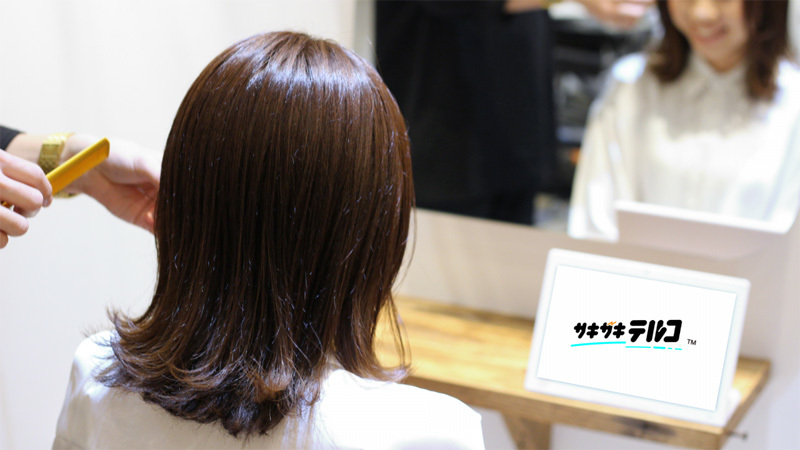
The OOH (Out Of Home: outdoor advertising and transit advertising) market is expanding as digitalization advances.
Recently, various forms of DOOH (Digital Out Of Home: advertising utilizing digital signage) have been gaining attention. Compared to analog OOH, DOOH offers numerous advantages: easier ad placement, higher immediacy, the ability to reach targeted audiences, and measurable advertising effectiveness.
To explore new trends in DOOH, we spoke with Shingo Moroiishi of Digital Garage Marketing Technology Company, who oversees "Sakizaki Teruko," a digital signage media platform specialized for hair salons.
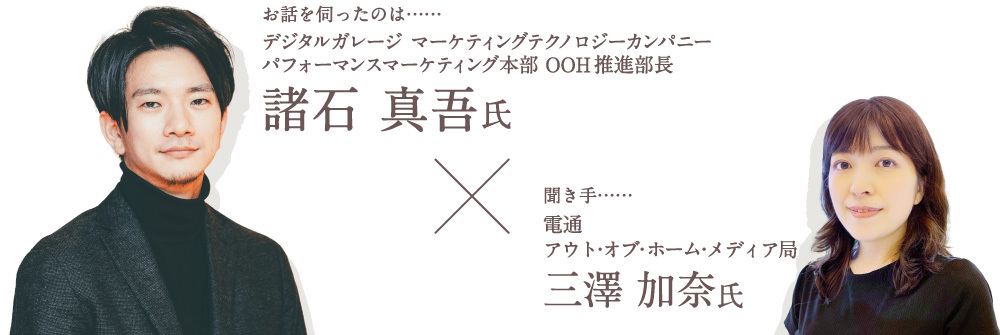
Hair Salon Signage with High Viewership
──What kind of signage is "Sakizaki Teruko"?
As of July 2021, we have installed approximately 11,000 dedicated terminals in hair salons nationwide, reaching 1.1 million people monthly. "Sakizaki Teruko" features one terminal per chair, positioned in front of the mirror. This enables video ad delivery that naturally enters the field of vision of salon customers, making it a medium with exceptionally high viewability.
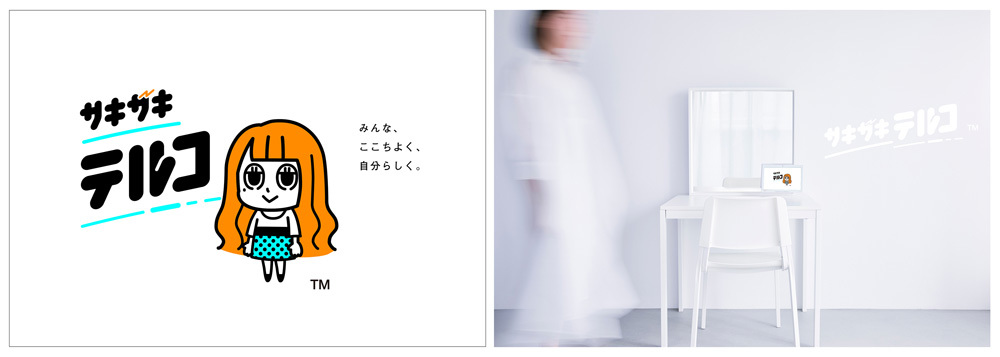
──Please tell us about your video content editing policy.
Under the concept "Everyone, feel comfortable and be yourself," we deliver video content useful for users' lives. We distribute original content like animations featuring our original character "Saki Teruko," horoscopes, and advice columns, aiming to be a media platform where the character delivers information at a comfortable distance.

Since hair salons are places visited by diverse people, we carefully craft content featuring approachable characters so viewers can naturally enjoy it. In addition to original content, we edit video materials provided by content partners to suit "Sakizaki Teruko" and distribute them. We also collaborate with content partners to create advertising menus.
──How are advertisements distributed?
For pure advertising, we deliver ads within 30-minute video content rolls, with each slot lasting 30 seconds to a maximum of 90 seconds. Depending on availability, we can also place ads between compatible content based on advertiser preferences. We've connected part of our ad inventory to the "MONOLITHS" digital signage network provided by MicroAd Digital Signage, enabling programmatic delivery (*1).
Current programmatic delivery capabilities include specifying area, time, and frequency, as well as ad delivery utilizing external APIs (※2). The ability to target specific areas has been well-received by advertisers operating clinics, beauty salons, gyms, and similar businesses. Furthermore, we can now flexibly accommodate requests such as running several million yen worth of ads for two consecutive months, based on the delivery budget.
*1 Programmatic delivery: Networked DOOH that automatically handles ad transactions and delivery. A key feature is the centralized management of ad slots, metrics, and delivery.
※2 API (Application Programming Interface): A mechanism that partially exposes software functionality, enabling other software to share those functions.
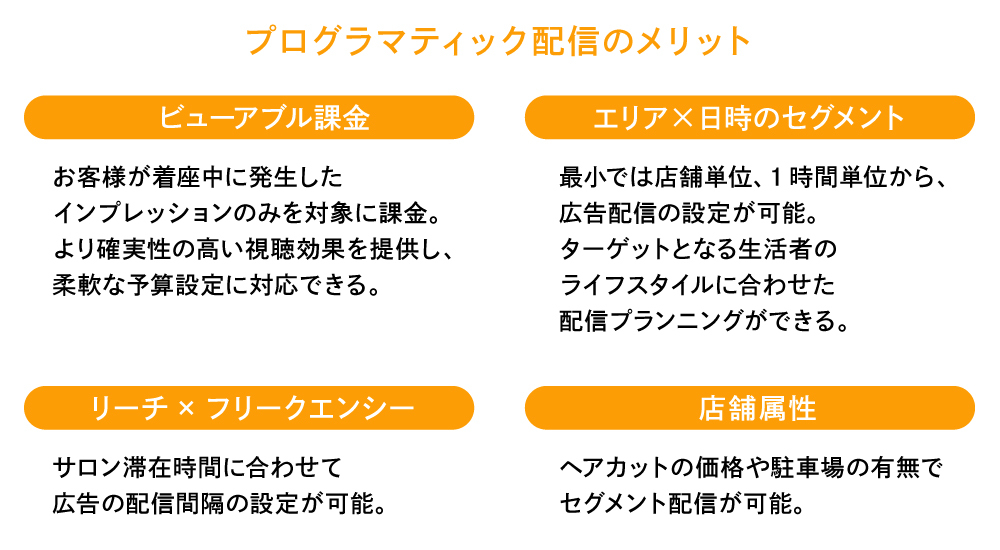
Post-delivery reporting includes estimated reach, number of playback terminals, seated view counts, and cost per view broken down by day, time slot, region, and other metrics. Seated view counts are achieved using facial recognition technology embedded in the signage terminals. This technology counts only views during seated interactions, excluding empty seats or views by salon staff, from the total playback count.
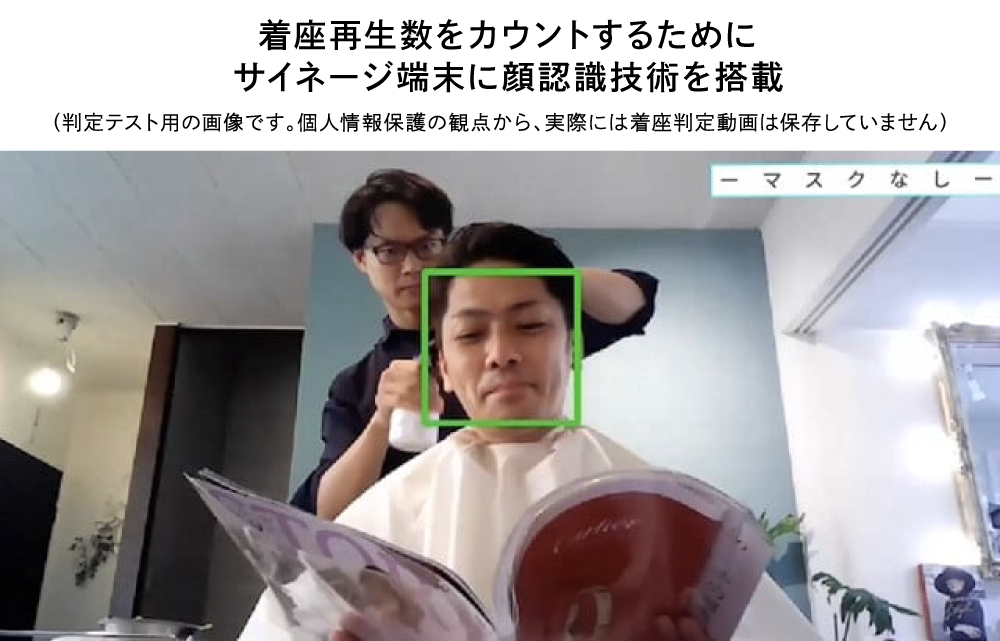
──What types of advertisers place orders? How have salons that adopted the system responded?
Advertisers primarily include companies handling beauty-related products, women's products, and goods suited for long-form video promotion, such as automobiles and home appliances. Time spent at the salon often provides opportunities to think about beauty, making it particularly effective for promoting beauty products, especially hair care items.
Additionally, stylists repeatedly watch the video ads, making it easier for them to discuss the content with clients. Beyond promoting product awareness and understanding through video ads, we can also offer in-salon sampling where clients can physically try products on the spot. We can have stylists experience products beforehand; if they like them, they can share positive feedback with clients.
Our research shows the average salon visit duration is approximately 70 minutes for men and 100 minutes for women. They spend extended time in a relaxed state, creating an environment receptive to content and advertising. Targeting these moments is a key strength of "Sakizaki Teruko." Since viewers often watch longer videos lasting several minutes all the way through, content that promotes product understanding (like development background), videos conveying everyday usage scenarios, and videos incorporating messages aimed at corporate branding are well-suited.
Brand lift surveys show high lift values for interest and purchase intent, along with strong message penetration rates. Advertisers also report better results compared to other media. We believe salon signage media, with its high completion rates, is highly effective for mid-funnel approaches (when consumers have identified interests, concerns, or challenges and are actively seeking information).
The pandemic also presented challenges for hair salons, such as not being able to offer customers drinks or magazines. Our digital signage is contactless, allowing viewers to enjoy it even during the pandemic. Video content and ads often become topics of conversation between viewers and stylists, seemingly helping build relationships between them.
──What aspects of the service do you want to strengthen going forward?
The pandemic has diversified people's lifestyles, making it harder to reach targets with traditional media planning. However, while foot traffic temporarily dropped after COVID began, the act of visiting a hair salon for a haircut hasn't changed. Going forward, we want to establish hair salons as contact points—as lifestyle touchpoint media that reliably delivers information to targets.
While OOH often involves 1-to-N (mass) advertising, hair salons are closer to personal spaces, offering a 1-to-1 environment. This makes programmatic delivery possible, similar to web advertising. Furthermore, by delivering optimized content and ads, we can provide viewers with useful information. We will continue striving to improve advertising effectiveness, increase salon visit frequency, and boost in-salon product sales.
After the interview...
I visit my hair salon about once every few months, staying for around two hours. Since the spread of COVID-19, I started looking for and going to a salon closer to home. There, tablets and signage terminals are placed at each seat instead of magazines. It's rare to talk non-stop with the stylist for two hours, and that's where the salon's signage naturally comes into play.
Sitting in the chair for an extended period means the content naturally enters my field of vision, sparking thoughts like, "Oh, there's a new product like this. I'd like to try it," or "That recipe looks delicious." I also realized that, with heightened awareness about beauty and nothing else to do, I was paying more focused attention than I would to a TV commercial. Since I have my smartphone nearby, it feels natural to use the signage to capture interest and then direct viewers to the smartphone site.
The combination of places with a clear purpose for visiting, like hair salons, and OOH advertising is highly effective for promoting specific products. Marketing and advertising professionals might gain new insights into how to promote their products or services by experiencing it as a customer.
Was this article helpful?
Newsletter registration is here
We select and publish important news every day
For inquiries about this article
Back Numbers
Author

Kana Misawa
Dentsu Inc.
Out-of-Home Media Division
After working in creative, sports business, AI chatbot, and healthcare business development, he assumed his current position. He is involved in developing media planning tools centered on OOH and business development in the data and technology domain. Ph.D. (Interdisciplinary Information Studies)




